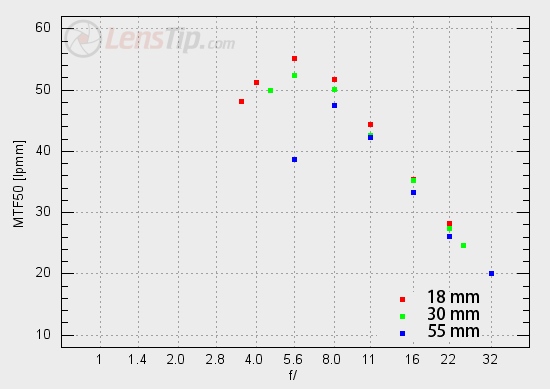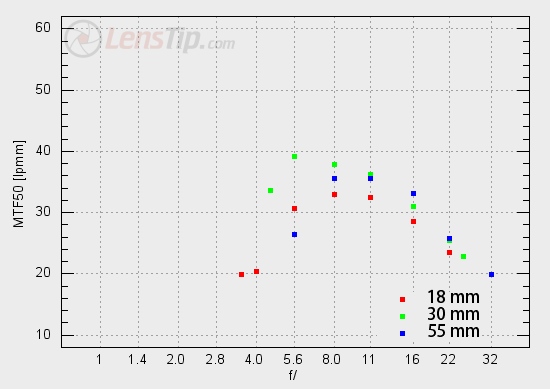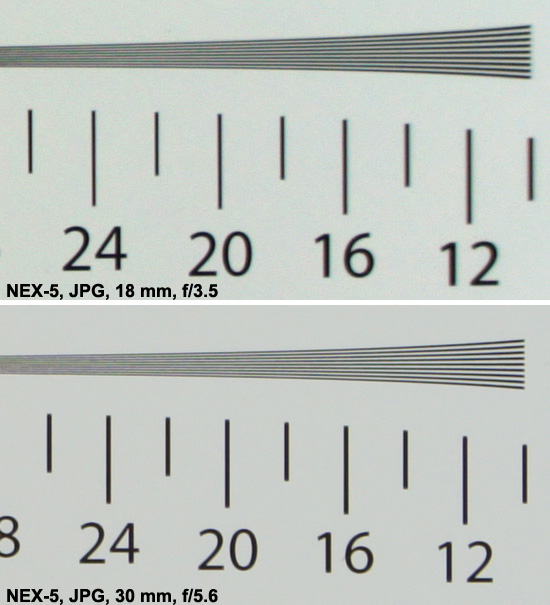Sony E 18-55 mm f/3.5-5.6 OSS
4. Image resolution
As always, the results reached by f/16 are a good reference point and their vicinity we consider to be the decency level. In this case this level is situated near 35-36 lpmm.
Let’s have a look at the graph presenting the achievements of the tested lens in the frame centre.
Please Support UsIf you enjoy our reviews and articles, and you want us to continue our work please, support our website by donating through PayPal. The funds are going to be used for paying our editorial team, renting servers, and equipping our testing studio; only that way we will be able to continue providing you interesting content for free. |
- - - - - - - - - - - - - - - - - - - - - - - - - - - - - - - - - - - - - - - - - - - - - - - -

In the range from 18 to 30 mm the lens performs really well regardless what aperture you use. The Sony kit reaches almost 50 lpmm even fully open at wide angle which is definitely a value worth praising. On stopping down to f/5.6 allows us to get even a better result of 55 lpmm. The tested lens shouldn’t be ashamed of its achievements even compared to the only prime lens, currently available in the system.
The situation looks a bit worse at the maximum relative aperture and 55 mm focal length, where only on stopping down by 1 EV we see the results similar to those across the board. Criticizing a resolution at the level of 39 lpmm would be going over the top, though – it is still a fully useful value. In the frame centre the Sony kit lens fares very much like the Olympus M Zuiko Digital 14-42 mm f/3.5-5.6 ED on an Olympus E-P1.
As you see, the Sony kit can be only praised for its performance in the frame centre.
Let’s consult the resolution graph for the edge of the frame now.

In this case the Sony E 18–55 mm f/3.5–5.6 won’t be praised so much. Especially the weak resolution at the shortest focal length and the maximum relative aperture sticks out blatantly – it is a result well below the decency level. What’s more, although the stopping down helps, it still can’t make the images fully useful. In the sharpest range from f/5.6 to f/11.0 the lens reaches results ranging from 31 to 33 lpmm.
The situation at longer focal lengths is fortunately better and the lens reaches the best results in the middle of the focal range. The maximum focal length at the maximum relative aperture fares noticeably below expectations. The level of 26 lpmm, reached there, doesn’t impress and only on stopping down by 1 EV it can be called acceptable.
The aforementioned Olympus kit on the edge of the frame performed a lot better.
The achievements of the NEX system kit are perhaps not very impressing or record-breaking but they are nothing to be ashamed of. The frame centre is beyond reproach but the frame edge results can make us complain a bit. This weak performance might be one reason (apart from the fastness) why we might want to look for a kit substitute. However, we will most probably have to wait a bit for it.
 |






